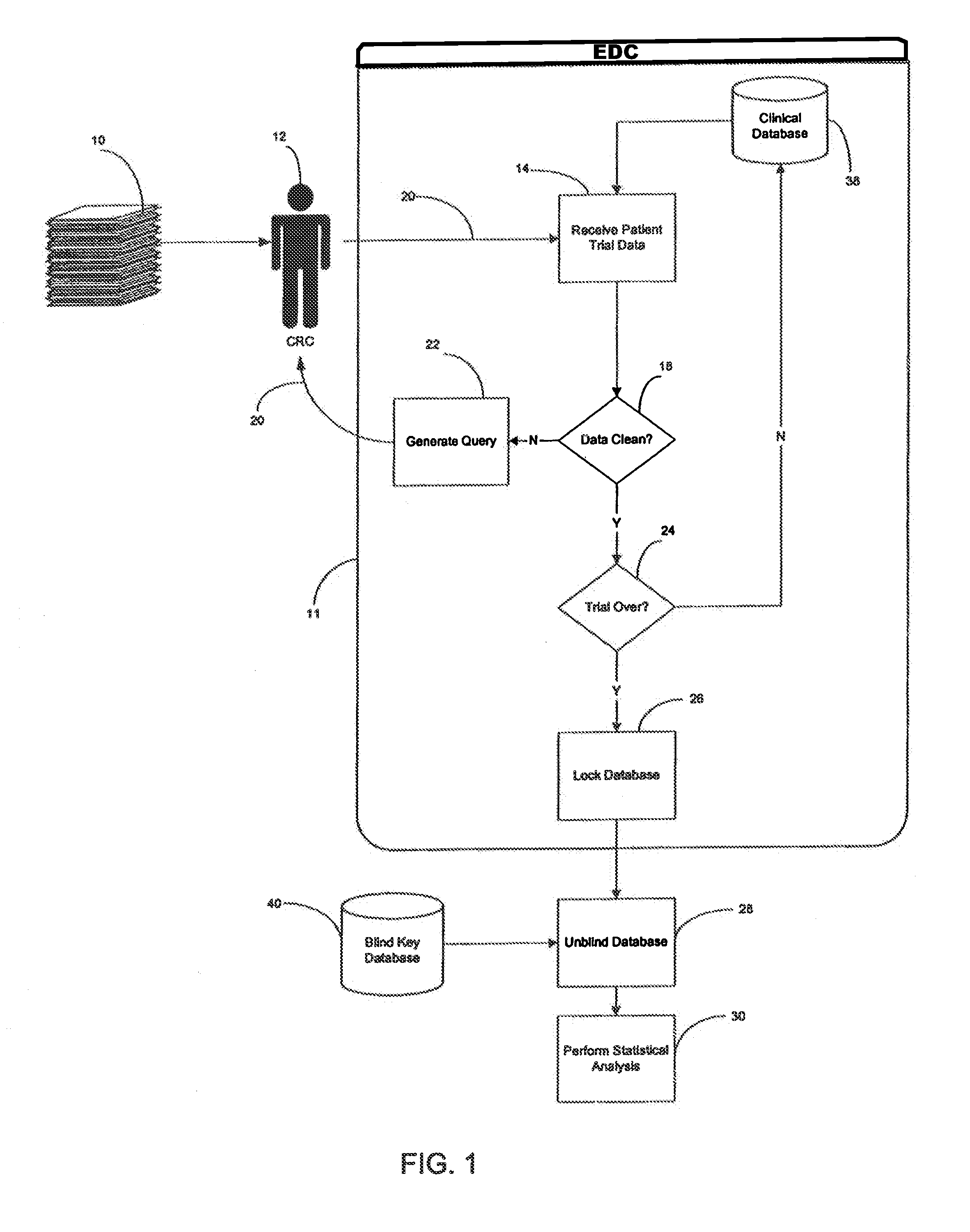System and method for continuous data analysis of an ongoing clinical trial
a clinical trial and data analysis technology, applied in the field of clinical trial data processing, can solve the problems of prolonged unnoticed treatment toxicity, skewing the data and outcome of the clinical trial, and no way to separate out subjects and their data into corresponding groups
- Summary
- Abstract
- Description
- Claims
- Application Information
AI Technical Summary
Benefits of technology
Problems solved by technology
Method used
Image
Examples
Embodiment Construction
[0067]The present application is applicable to any clinical studies utilizing electronic data collection, including but not limited to collecting clinical data over a network from a plurality of trial participants. Clinical studies can involve multiple groups to enable comparisons to be made between subjects receiving the actual medication versus placebo. Also, clinical studies can involve a single study group, wherein data collected from the clinical trial can be compared to data from other similar clinical trials or studies, or to historical data. Although randomization or randomized studies lend themselves to clinical trials with multiple study groups, it is not necessary for clinical trials with single study group. It is appreciated that randomization is not necessary required for clinical trials with multiple study groups, the study subjects can request assignment to a particular study group or arm, or can be assigned to a particular study group at the discretion of the investi...
PUM
 Login to View More
Login to View More Abstract
Description
Claims
Application Information
 Login to View More
Login to View More - R&D
- Intellectual Property
- Life Sciences
- Materials
- Tech Scout
- Unparalleled Data Quality
- Higher Quality Content
- 60% Fewer Hallucinations
Browse by: Latest US Patents, China's latest patents, Technical Efficacy Thesaurus, Application Domain, Technology Topic, Popular Technical Reports.
© 2025 PatSnap. All rights reserved.Legal|Privacy policy|Modern Slavery Act Transparency Statement|Sitemap|About US| Contact US: help@patsnap.com



